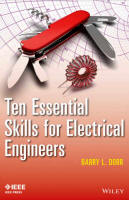 All RF Cafe Quizzes make great fodder for
employment interviews for technicians or engineers - particularly those who are
fresh out of school or are relatively new to the work world. Come to think of it,
they would make equally excellent study material for the same persons who are going
to be interviewed for a job. Bonne chance, Viel Glück, がんばろう,
buena suerte, удачи, in bocca al lupo, 행운을 빕니다,
ádh mór, בהצלחה, lykke til, 祝你好運.
Well, you know what I mean: Good luck! All RF Cafe Quizzes make great fodder for
employment interviews for technicians or engineers - particularly those who are
fresh out of school or are relatively new to the work world. Come to think of it,
they would make equally excellent study material for the same persons who are going
to be interviewed for a job. Bonne chance, Viel Glück, がんばろう,
buena suerte, удачи, in bocca al lupo, 행운을 빕니다,
ádh mór, בהצלחה, lykke til, 祝你好運.
Well, you know what I mean: Good luck!
Click here for the complete list of
RF Cafe Quizzes.
Note: Some material based on books have quoted passages.
Return to
RF Cafe Quiz #60

This quiz is based on the information presented in
Ten Essential Skills for Electrical Engineers, by Barry L. Dorr.
Note: Some of these books are available as prizes in the monthly
RF Cafe Giveaway.
1. What can be the result on digital signals when signal reflections exist between source
and load?
d) All the above. (see page 190)
2. What causes signal reflections?
c) An impedance mismatch between the source and the load. (see page 190)
3. Why is sitting at the head of the table during a group interview the best position?
b) It allows you to address everyone eye-to-eye at once. (see page 218)
4. What is 'statistical independence' when referring to component failure rates?
a) The failure of one component has no influence on the failure of any other component
(see page 62)
5. What parameter does the Smith Chart represent?
a) Complex reflection coefficient (see page 199)
6. What is the difference between a passive and an active analog filter?
c) An active filter includes a gain element (i.e., opamp) whereas a passive one does not
(see page 124)
7. What limits the response of a FIR (finite impulse response) digital filter?
d) Length of the filter register (see page 162)
8. What property describes a first-order feedback control system?
d) All the above (see page 84)
9. What are the electrical circuit model equivalents of temperature and heat?
a) Voltage and current (see page 21)
10. What is the term for the area of negotiation between the new graduate's perspective
and the employer's perspective?
a) Middle ground (see page 219)
Posted May 30, 2014
|










